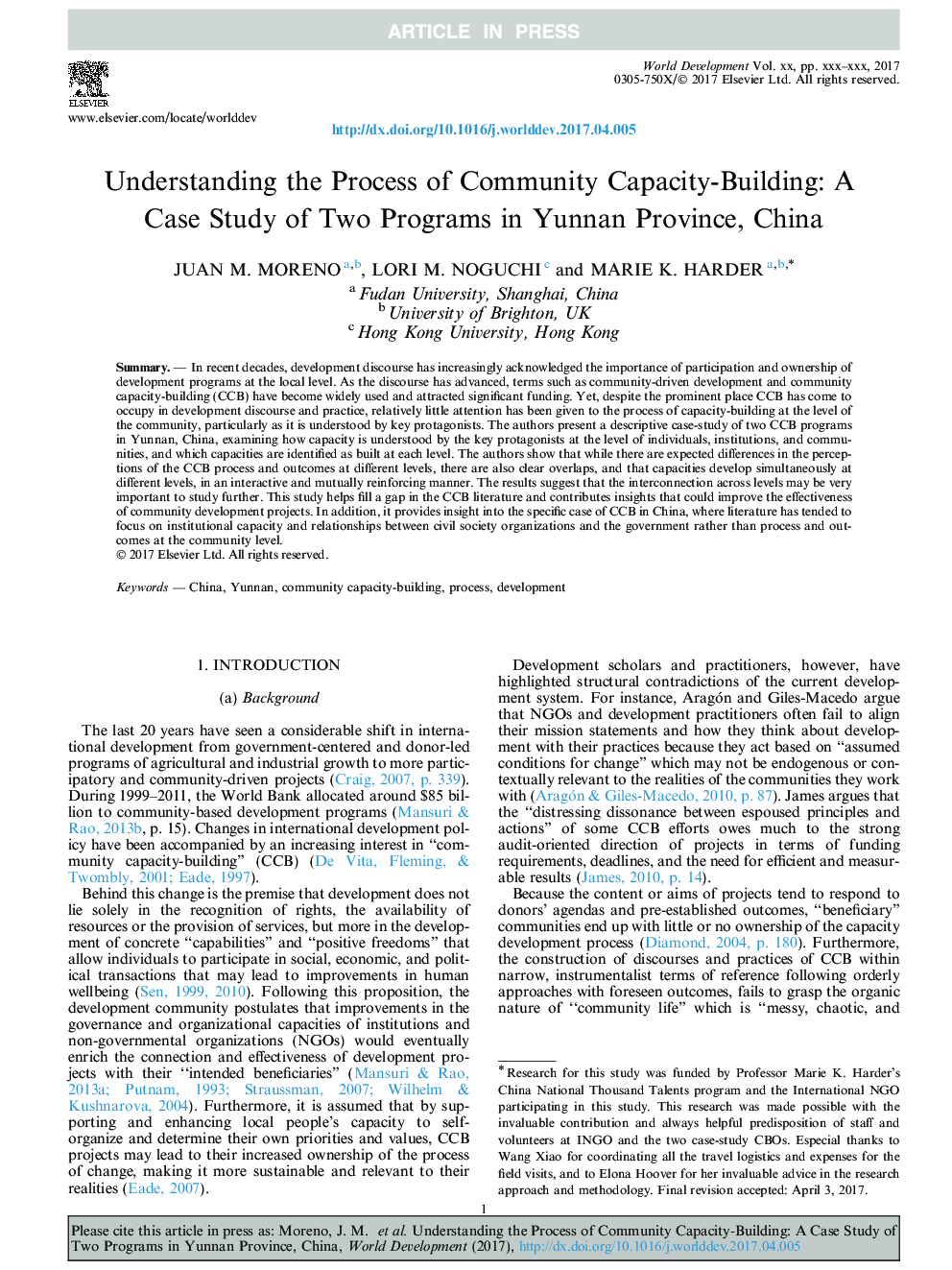| Article ID | Journal | Published Year | Pages | File Type |
|---|---|---|---|---|
| 5105177 | World Development | 2017 | 16 Pages |
Abstract
In recent decades, development discourse has increasingly acknowledged the importance of participation and ownership of development programs at the local level. As the discourse has advanced, terms such as community-driven development and community capacity-building (CCB) have become widely used and attracted significant funding. Yet, despite the prominent place CCB has come to occupy in development discourse and practice, relatively little attention has been given to the process of capacity-building at the level of the community, particularly as it is understood by key protagonists. The authors present a descriptive case-study of two CCB programs in Yunnan, China, examining how capacity is understood by the key protagonists at the level of individuals, institutions, and communities, and which capacities are identified as built at each level. The authors show that while there are expected differences in the perceptions of the CCB process and outcomes at different levels, there are also clear overlaps, and that capacities develop simultaneously at different levels, in an interactive and mutually reinforcing manner. The results suggest that the interconnection across levels may be very important to study further. This study helps fill a gap in the CCB literature and contributes insights that could improve the effectiveness of community development projects. In addition, it provides insight into the specific case of CCB in China, where literature has tended to focus on institutional capacity and relationships between civil society organizations and the government rather than process and outcomes at the community level.
Keywords
Related Topics
Social Sciences and Humanities
Economics, Econometrics and Finance
Economics and Econometrics
Authors
Juan M. Moreno, Lori M. Noguchi, Marie K. Harder,
